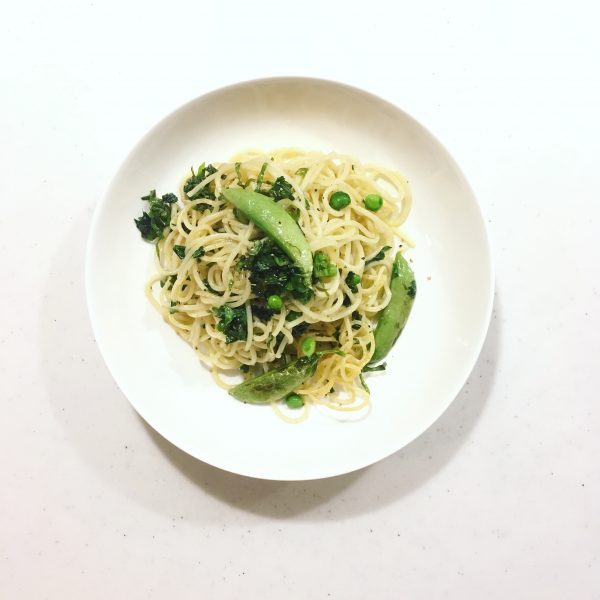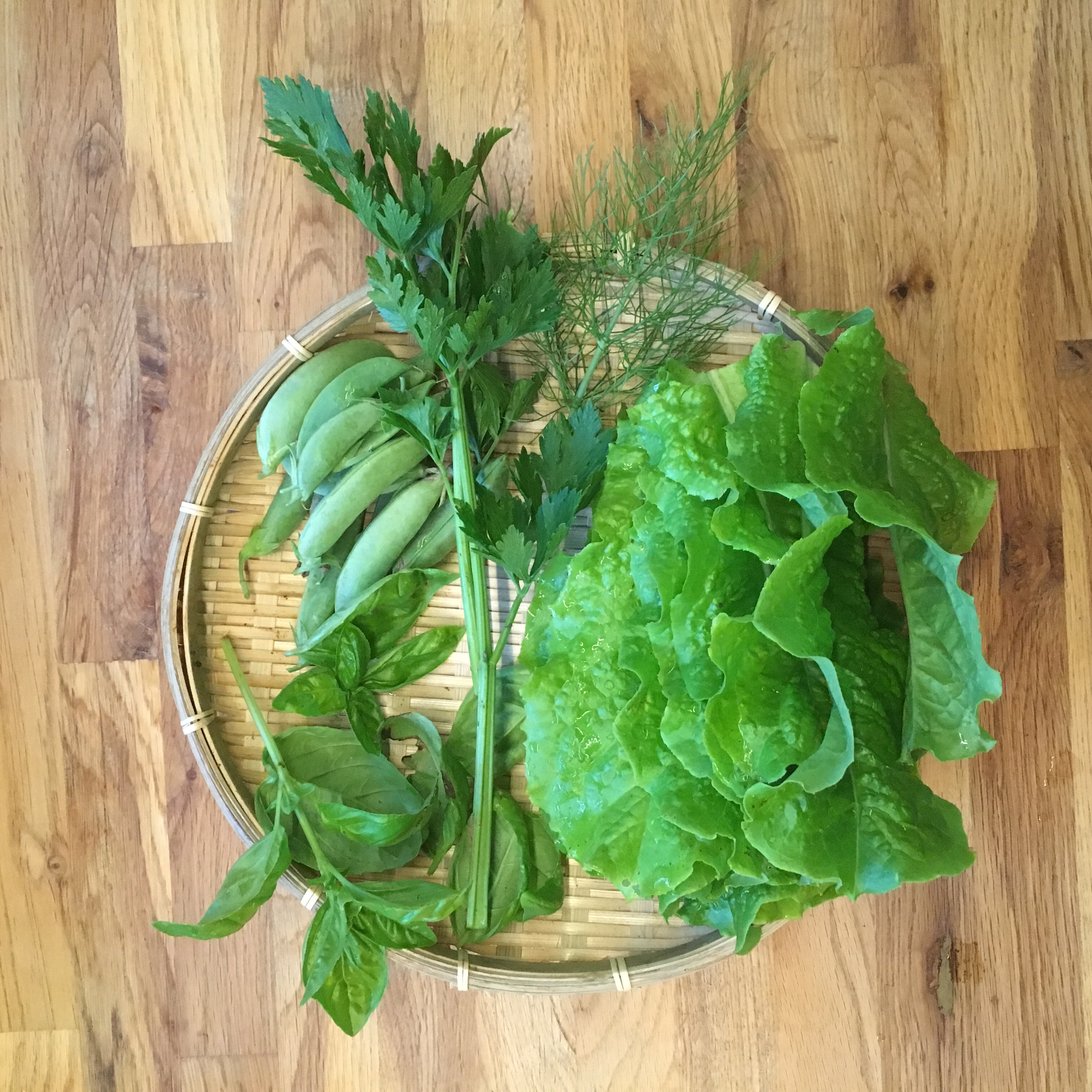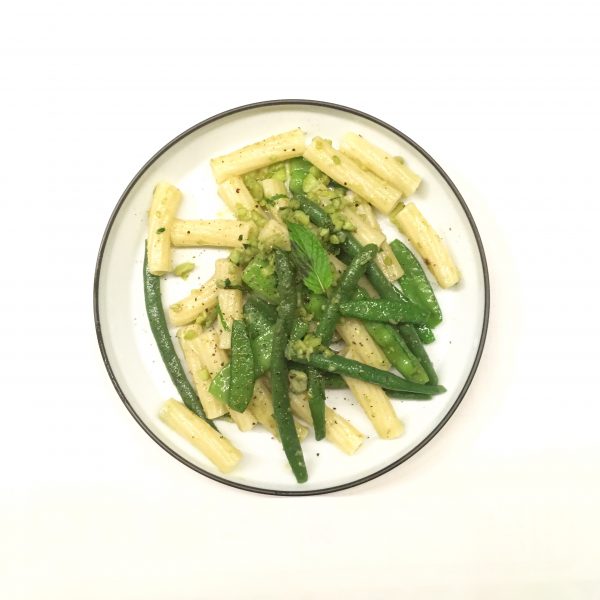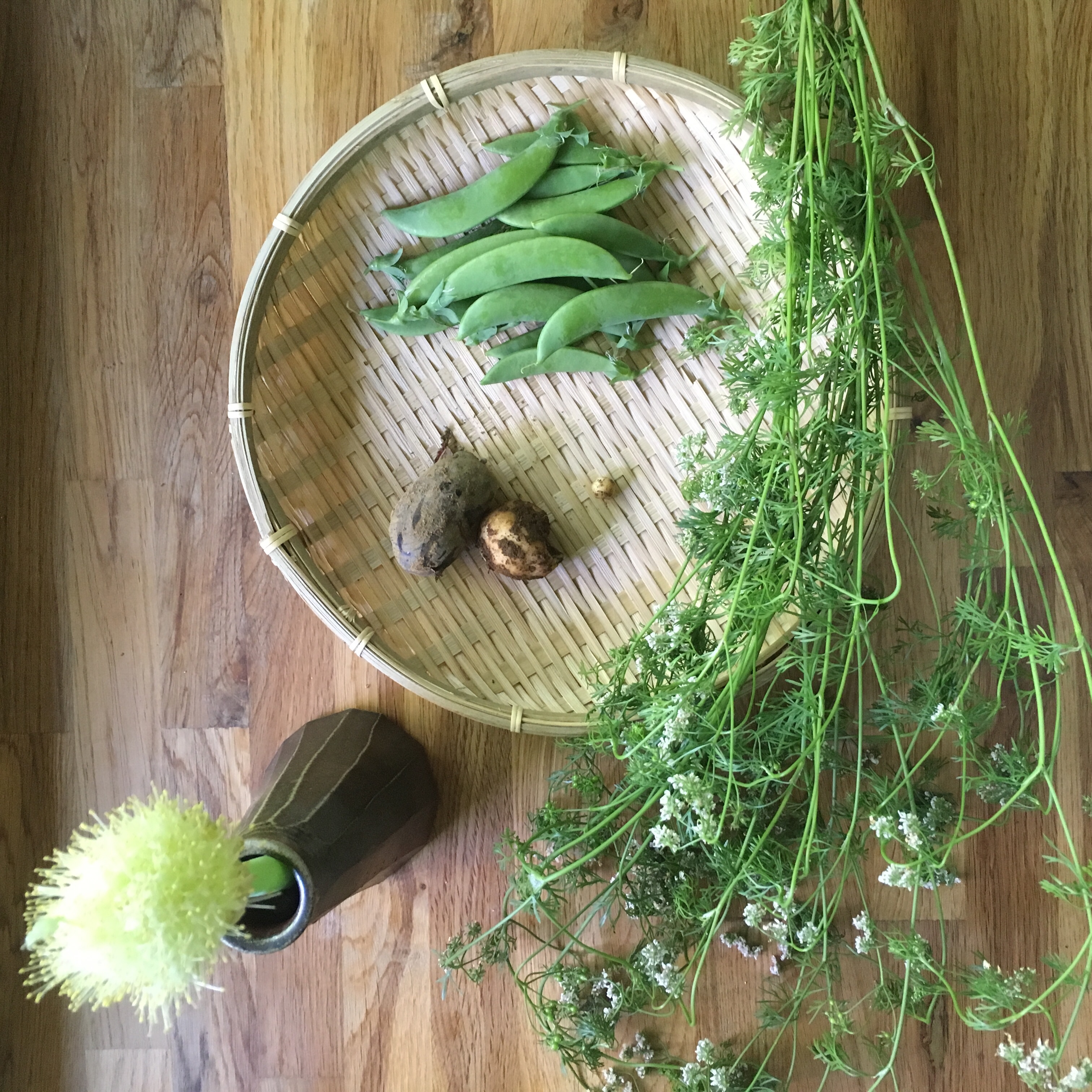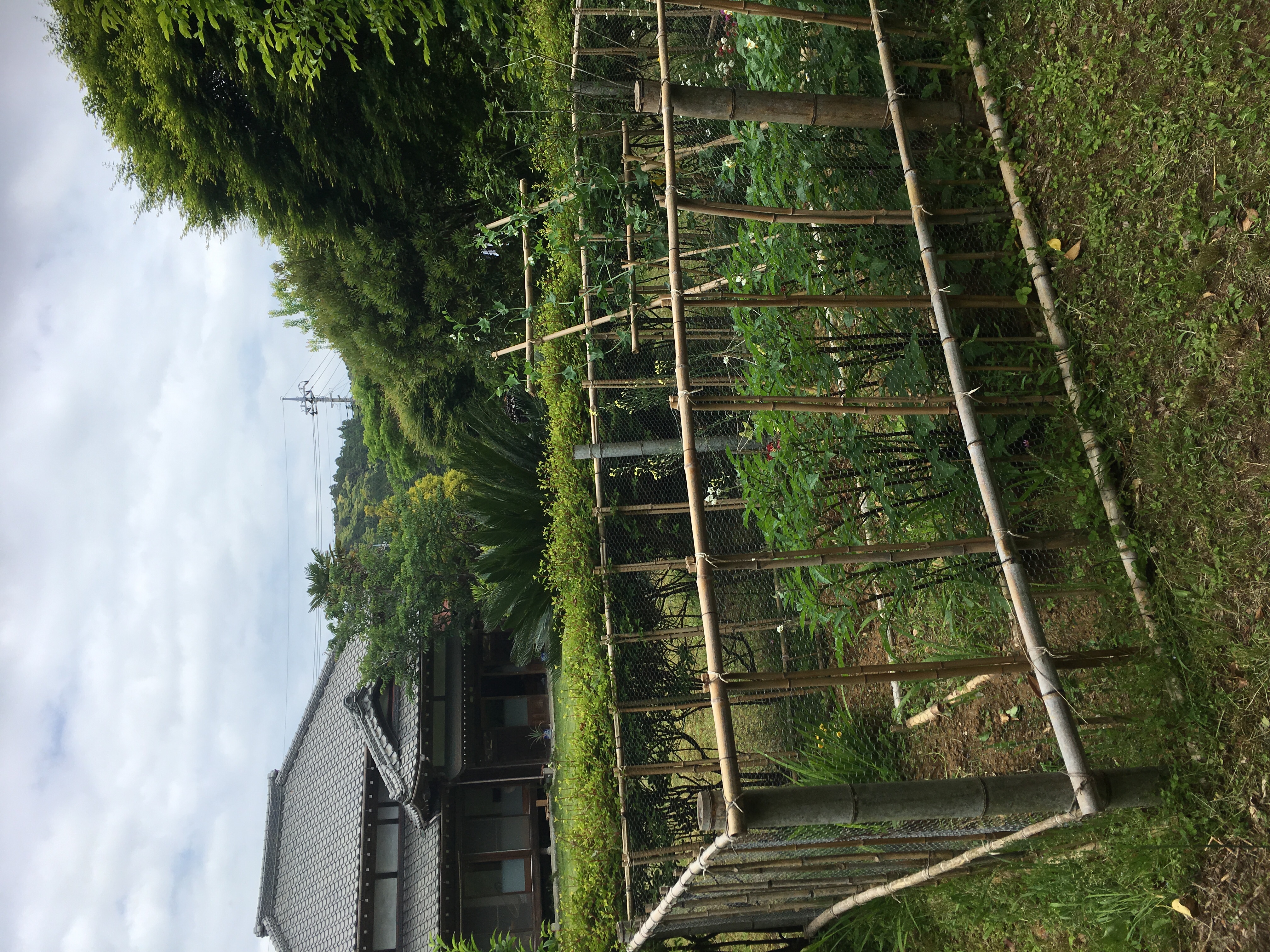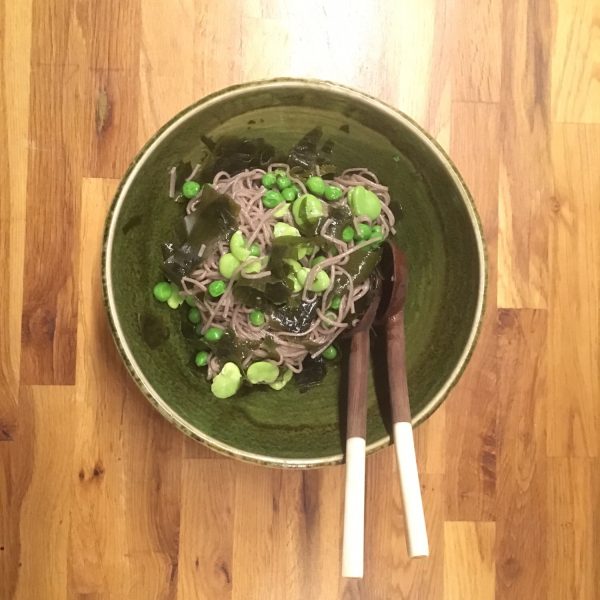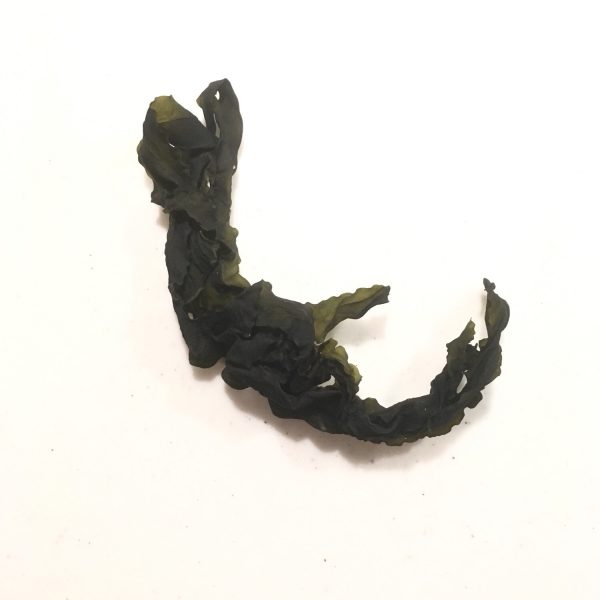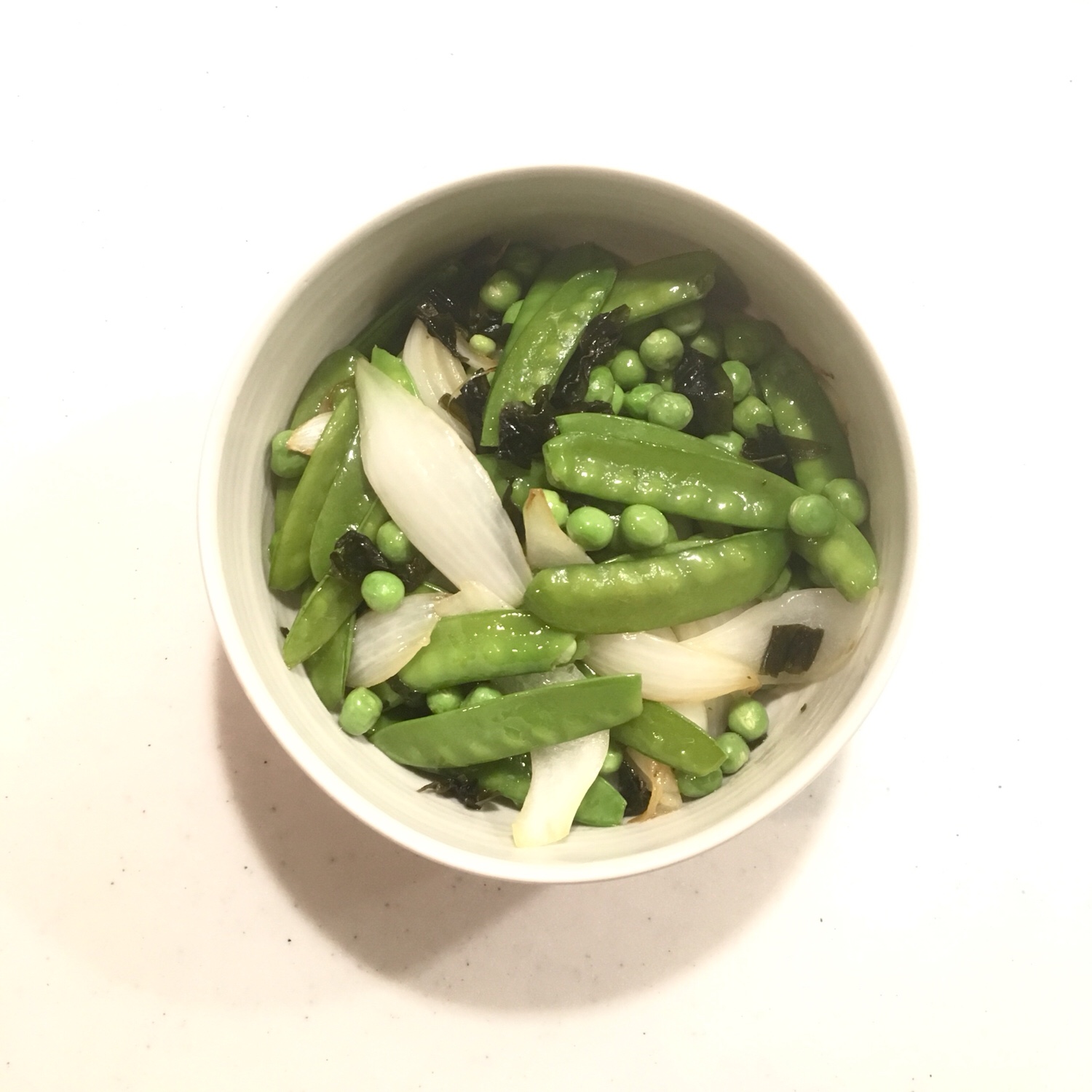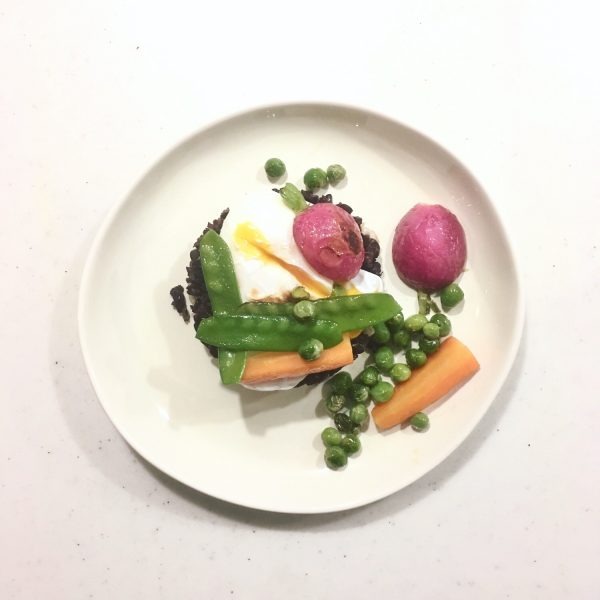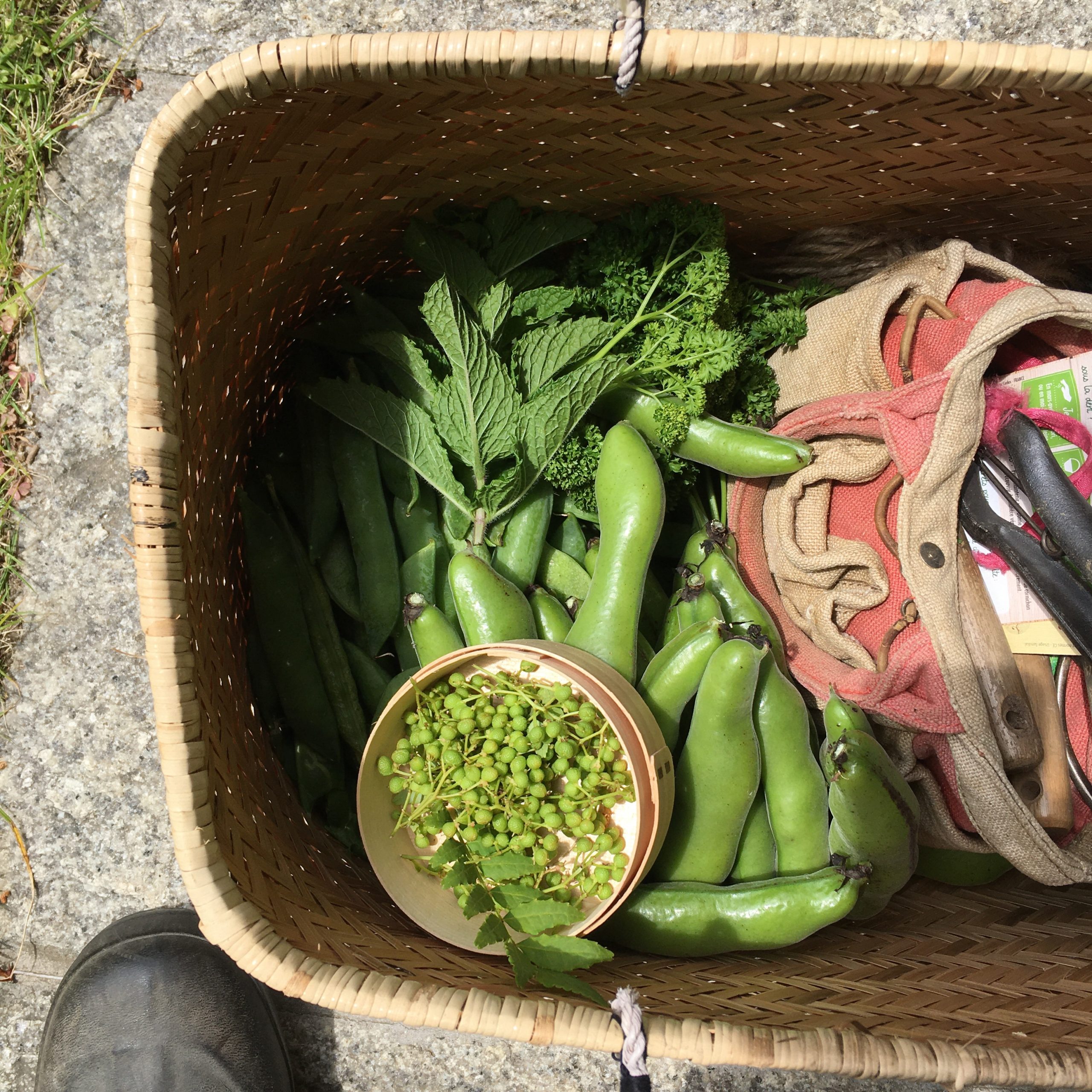
Late spring brings in so many vegetables! Our modest kitchen garden produced a beautiful crop of green peas. Not over a long period of time like last year, but a few kilos in a very short time. I also harvested a lot of sansho pods, and while looking at the recipe to prepare them in my book of Shojin cuisine, I just found a recipe that so far curiously never attracted me before but was perfect with what I had in the fridge: bamboo shoot and green peas sushi rice. It took just one second to verify I had all the ingredients I needed and my mind was all set. I don’t eat fish and seafood sushi, but I love sushi rice, slightly vinegary and sweet. It is very easy to prepare but somehow never make any…
It was time to change this!
Here is the recipe I prepared, slightly modified from the original.
Bamboo shoot and green peas sushi (4 servings, side dish)
- 2 go of rice (or 2 cups but that would be more)
- A handful of fresh green peas
- 1 fresh bamboo shoot
- A pinch of salt
- 2tbs of rice vinegar
- 3tbs of sugar
- 1tbs of soya sauce
- A few sansho leaves
Cook the rice. In the meantime, peel the bamboo, cut it in 3mm thick slices, and the cut the the slices in 2cm strips and boil it for 15min. Drain. In a pan set the bamboo and the green peas, add 2tbs of water, 1tbs of sugar, 1tbs of soya sauce. Cook at medium heat until almost all the liquid is gone. Mix the vinegar and the 2tbs of sugar with the rice. Stir well, add the vegetables and stir gently. Add the sansho leaves and enjoy!
Do not refrigerate, the rice would become hard and flavors would vanish.
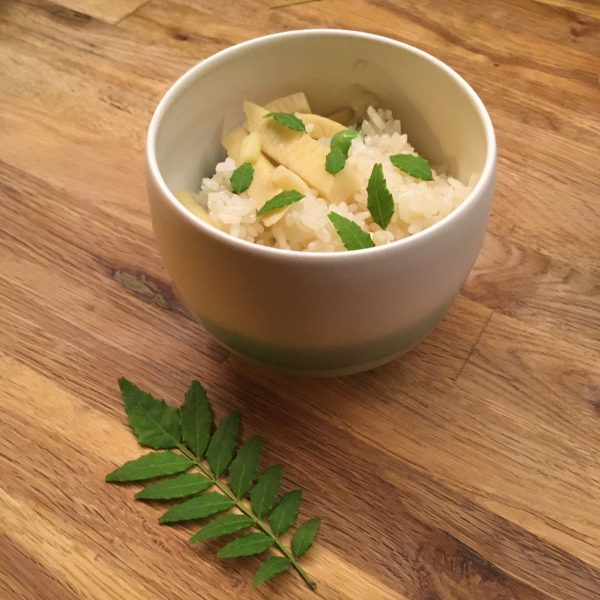
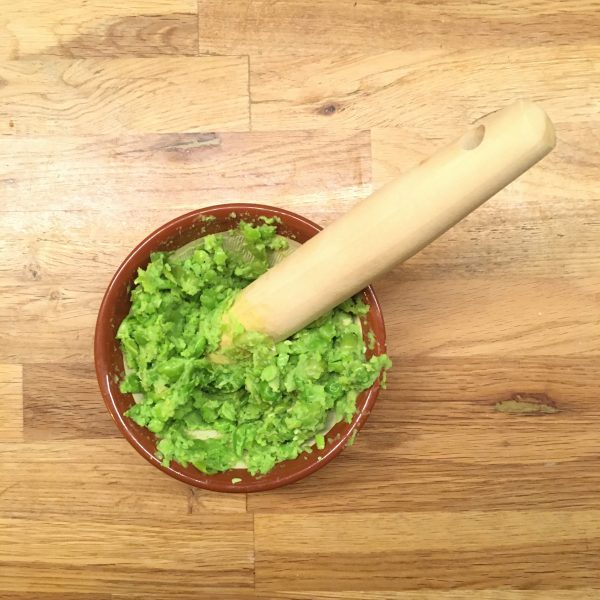
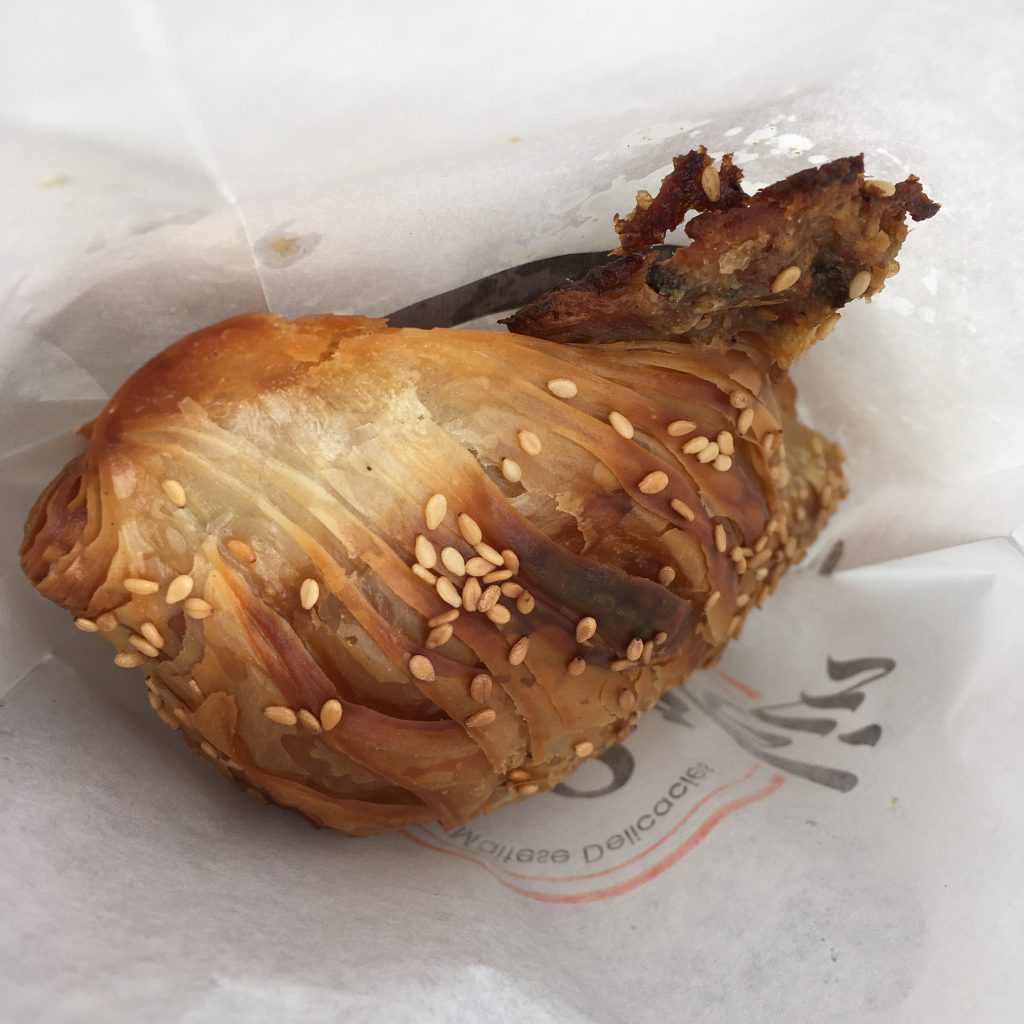
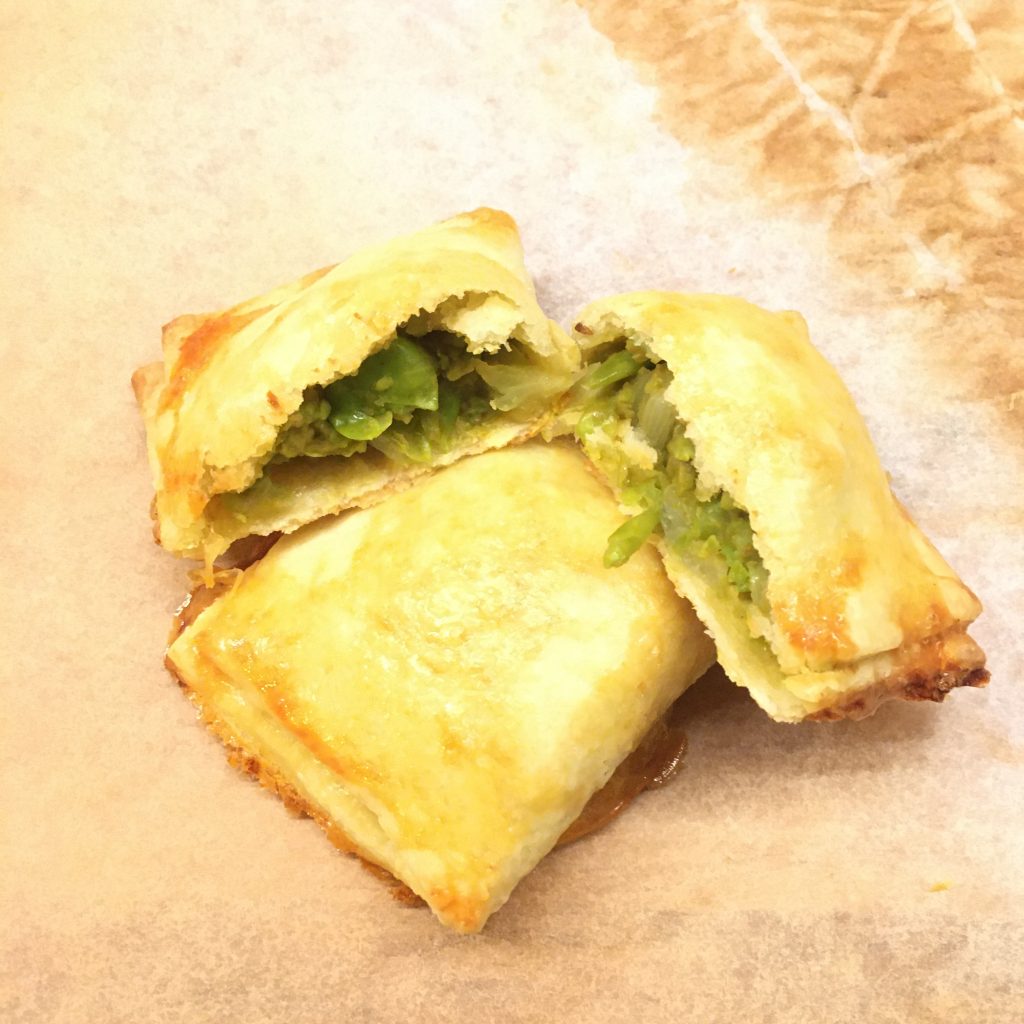
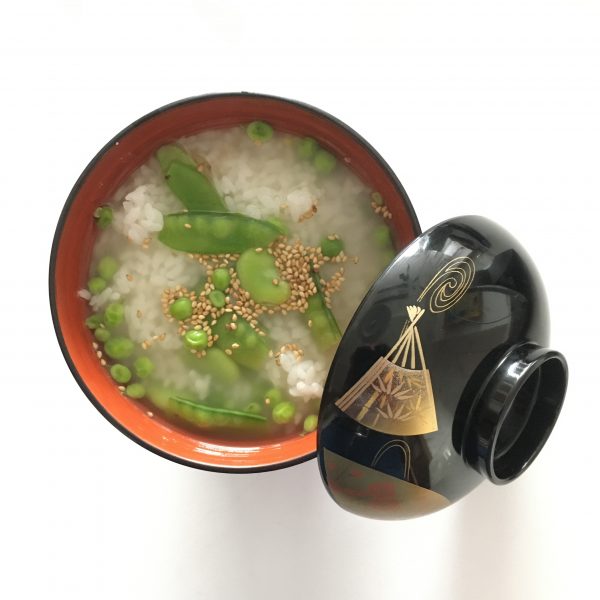
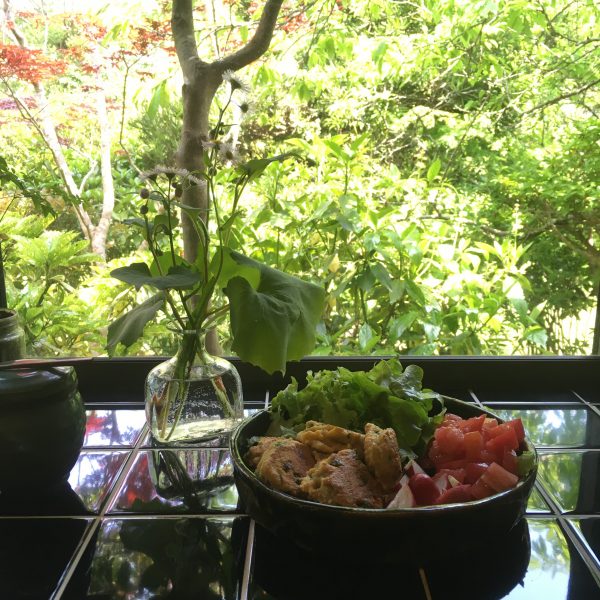
 Cornmeal and green peas spicy croquettes
Cornmeal and green peas spicy croquettes

